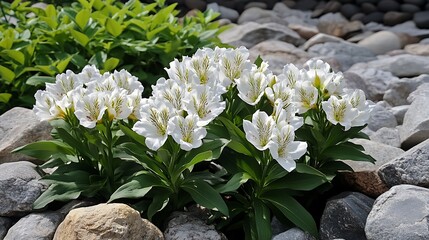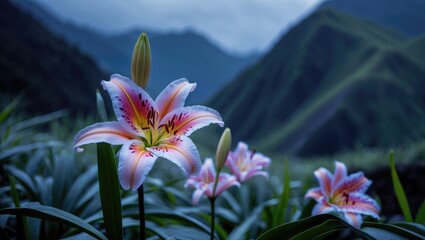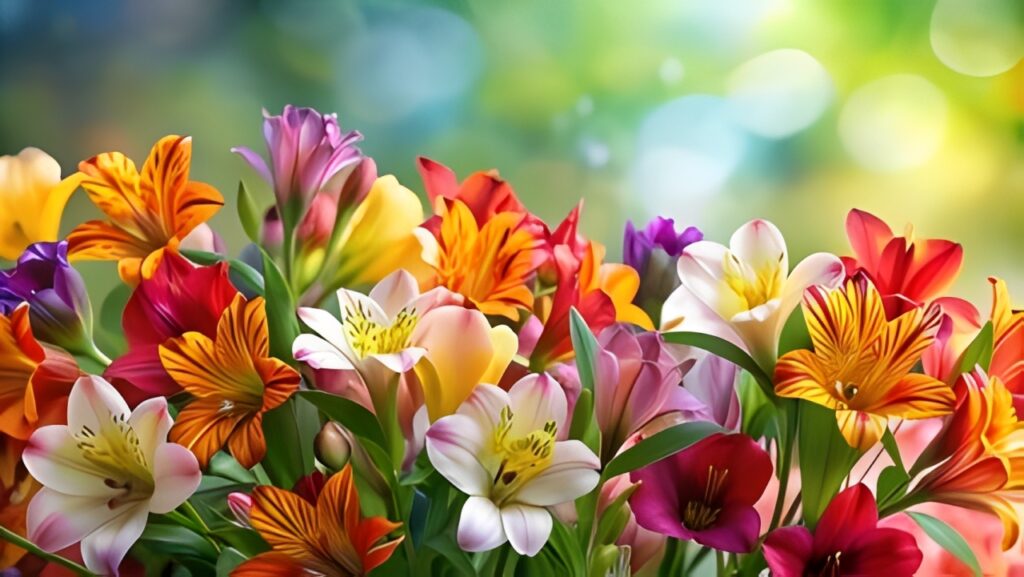Alomesteria, also known as the Peruvian lily or Alstroemeria, is one of the most elegant and colorful flowers in the world. It comes from South America, mainly Peru, Chile, and Brazil, and it’s loved for its bright petals, graceful shape, and long-lasting blooms. People love growing alomesteria in their gardens because it symbolizes friendship, love, and strength. The flower’s charm lies in its ability to bloom in many colors, such as pink, white, orange, purple, and yellow, which makes it perfect for decorations and gifts.
The Origin and History of Alomesteria
The alomesteria plant has a rich history dating back hundreds of years. It was first discovered by Swedish botanist Clas Alstroemer, after whom the flower was named scientifically as Alstroemeria. Over time, people began calling it alomesteria in different regions. The flower grows naturally in South America’s mountains and cool valleys, especially near the Andes. Because of its strong roots, it adapted well to various environments. This strong background gives the alomesteria its symbolic meaning of resilience and endurance.
Characteristics of Alomesteria
The alomesteria flower stands out because of its unique shape and markings. It usually has six petals, and each petal is decorated with spots or streaks that make it look exotic. The stems are long and thin, making them great for floral arrangements. Moreover, alomesteria blooms last longer than many other flowers, often staying fresh for two weeks after being cut. Gardeners appreciate this quality because it adds lasting beauty to their gardens and bouquets.
Popular Varieties of Alomesteria
There are many types of alomesteria, each offering its own special color and charm. Some popular varieties include Alstroemeria aurea, which produces golden yellow blooms, and Alstroemeria psittacina, which has red and green petals. Hybrid varieties are also available, combining multiple colors for even more striking displays. Because of this diversity, florists and gardeners can easily choose the best alomesteria variety to match their aesthetic preferences or garden themes.
Symbolism and Meaning of Alomesteria
The alomesteria carries deep symbolic meanings. It represents friendship, mutual support, and lasting devotion. Many people gift alomesteria to express appreciation or to celebrate long-lasting relationships. The flower’s upward growth also symbolizes achievement and positive energy. In South American traditions, it’s a symbol of hope and renewal, reminding people that beauty can bloom even in challenging environments. Because of these meanings, alomesteria is often used in weddings and friendship bouquets.
Growing Alomesteria at Home
Growing alomesteria is quite simple when you understand its needs. The plant prefers fertile, well-drained soil rich in organic matter. It loves sunlight but doesn’t do well in extreme heat, so it grows best in partial shade. Regular watering is essential, but overwatering can damage the roots. For beginners, alomesteria is a great flower to start with because it doesn’t require much maintenance. Once planted properly, it rewards you with colorful blooms every season.
Ideal Climate for Alomesteria
Alomesteria thrives in mild climates. It enjoys cool temperatures between 15°C and 24°C. Although it can survive in warmer areas, it needs shade to prevent the leaves from burning. In winter, it’s important to protect it from frost by covering it with mulch or growing it in pots indoors. These steps ensure the plant remains healthy throughout the year. Because of its adaptable nature, alomesteria can grow in various countries worldwide, not just in South America.
How to Plant Alomesteria
Planting alomesteria begins with selecting a sunny but partially shaded area. Dig a hole that’s twice as wide as the root ball and mix compost into the soil. Gently place the plant into the hole and cover it with soil, then water it thoroughly. Regularly check that the soil stays moist but not soggy. Adding mulch around the base will help retain moisture and prevent weeds. Within a few weeks, new shoots begin to appear, and soon, the garden will fill with colorful alomesteria blooms.

Caring for Alomesteria
Taking care of alomesteria is not difficult, but consistency is key. Always remove dead flowers and leaves to help new blooms grow. Feed the plant every two weeks with a balanced fertilizer during the growing season. Keep the area around the plant clean and ensure it gets enough air circulation. If you notice yellow leaves, it could mean too much water or poor drainage. By keeping these small details in mind, you’ll enjoy healthy alomesteria plants that bloom beautifully all year.
Propagation Methods
There are two main ways to propagate alomesteria: through seeds or by dividing the roots. The division method is faster and more reliable. Simply dig up the plant, separate the rhizomes, and replant them in fresh soil. Make sure each section has enough roots for healthy growth. The seed method takes more time and patience, but it can produce exciting color variations. Whichever method you choose, proper watering and sunlight are essential for successful propagation.
Pests and Diseases
Although alomesteria is strong, it can sometimes face pest problems. Common pests include aphids, snails, and spider mites. These can damage the leaves and flowers if not controlled. To prevent this, regularly inspect your plants and use natural pest repellents when necessary. Overwatering can also cause root rot or fungal infections. Ensuring proper drainage is the best defense against these issues. With the right care, alomesteria remains vibrant and disease-free for years.
Alomesteria in Floral Arrangements
Alomesteria is one of the most popular flowers in floral arrangements because of its long-lasting freshness and wide color range. It adds brightness and texture to bouquets, centerpieces, and decorative pieces. Florists often mix alomesteria with roses, daisies, and lilies to create stunning designs. Its symbolic meaning of friendship makes it perfect for birthday, graduation, and anniversary gifts. Because the flowers stay fresh for up to two weeks, they’re ideal for professional events and weddings.
Alomesteria and Its Color Meanings
Each color of alomesteria carries a special message. Pink alomesteria symbolizes affection, yellow represents happiness, red stands for passion, and white conveys purity. Orange alomestria is associated with energy and creativity. Because of these meanings, people often choose specific colors to express emotions through flowers. For instance, gifting pink and yellow alomestria together represents joy and friendship. This emotional connection makes the flower not just beautiful but also meaningful.
Alomesteria in Different Cultures
In South American culture, alomesteria holds a sacred meaning. It’s often connected with the sun and seen as a symbol of life and growth. The Incas believed the flower represented strength and rebirth. In Europe and North America, alomestria is associated with friendship and new beginnings. Because it bridges cultural meanings, the flower has become a global favorite for expressing emotions without words. This universal symbolism is one reason for its ongoing popularity.
Using Alomesteria for Home Décor
Beyond gardens, alomesteria makes beautiful home décor. You can place fresh alomesteria in vases to brighten rooms or use them as centerpieces for dining tables. Their vibrant petals add elegance to any space. Moreover, dried alomestria can be used in craft projects or potpourri for long-lasting fragrance. Decorating with these flowers brings natural beauty indoors and creates a peaceful, inviting atmosphere. Their versatility makes them ideal for both traditional and modern interiors.
Environmental Benefits of Alomesteria
Alomesteria not only beautifies the surroundings but also supports the environment. The flowers attract bees, butterflies, and other pollinators, which help maintain ecosystem balance. Growing alomesteria can contribute to biodiversity in your garden. Moreover, since the plant thrives for many years, it reduces the need for constant replanting, making it eco-friendly. By planting alomestia, you’re not just adding color to your garden—you’re supporting nature’s growth cycle.
Alomesteria in the Modern World
Today, alomesteria is used worldwide in gardening, decoration, and even fashion photography. Its timeless appeal makes it a popular choice for social media posts and lifestyle magazines. Gardeners appreciate its low maintenance, while florists value its lasting beauty. The flower has also become a symbol of care and connection in digital greeting cards and online flower shops. Its mix of beauty and symbolism ensures that alomsteria remains relevant in today’s modern lifestyle.
Common Problems and Solutions
Sometimes alomesteria plants may face issues like drooping leaves or slow growth. These usually occur due to poor watering habits or lack of sunlight. To fix this, adjust watering frequency and ensure proper light exposure. If pests appear, use natural insect sprays. Regular pruning helps improve air circulation, reducing the chance of fungal diseases. Keeping a watchful eye and acting early helps your alomsteria grow beautifully and stay healthy for years.

Why You Should Grow Alomesteria
There are many reasons to grow alomesteria. It’s beautiful, long-lasting, easy to maintain, and symbolically rich. It adds color to any garden, spreads positive energy, and supports pollinators. Whether you’re an experienced gardener or a beginner, alomsteria is an excellent choice. Its wide color variety and long vase life make it perfect for both outdoor beauty and indoor elegance. With minimal effort, this plant rewards you with consistent, stunning blooms that light up your surroundings.
Conclusion
The alomesteria is a flower that combines beauty, meaning, and resilience. From its South American roots to gardens across the world, it continues to captivate hearts with its charm. Growing alomesteria connects you with nature and adds peace to your environment. Its flowers symbolize friendship, hope, and renewal—values that never go out of style. Whether as a gift or a personal joy, alomesteria will always remain one of nature’s most delightful treasures.
FAQs
1. What is the best way to grow alomesteria?
Plant it in well-drained soil and partial sunlight. Keep it watered but not overwatered.
2. How long do alomesteria flowers last?
Cut alomesteria flowers can stay fresh for up to two weeks if kept in clean water.
3. What do alomesteria flowers symbolize?
They symbolize friendship, devotion, hope, and strength.
4. Can alomesteria grow indoors?
Yes, it grows well in pots with enough light and moderate temperature.
5. Are alomesteria flowers toxic to pets?
They are mildly toxic if ingested, so keep them away from cats and dogs.
Read Also: Everything You Need to Know About 8009430692


